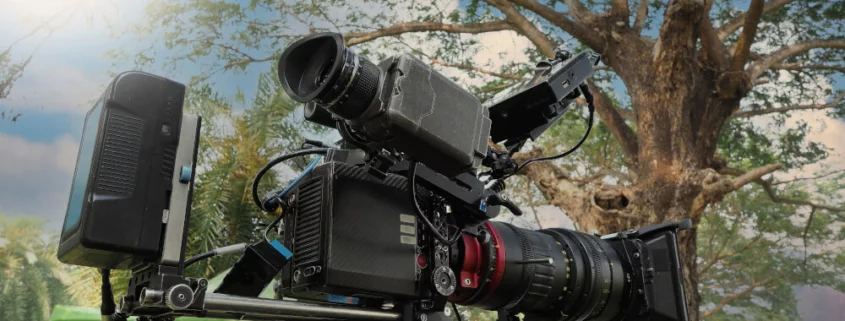Follow These Guidelines When Shooting on Location to Help Save Money on Production
If you’re used to filming in the almost perfect conditions that shooting on set or on sound stages provides, the unique issues that come with filming on location may surprise you the first few times you encounter it. There are many elements to consider, and many of them are simply beyond your control, such as the weather or (if it’s a public location) pedestrians, automobiles, and aeroplanes. There are many things to consider, but there are also many aspects over which you have no control.
There is a chance that the conditions on location will create some difficulties, such as the difficulty of getting there (trucks or trailers may have to struggle with harsher terrain), the likelihood of having little to no reception in order to coordinate with your crew, and so on. Shooting your clip on location, on the other hand, will give it a truly authentic quality, therefore it is typically well worth the effort.
We’ve developed a list of things to prepare for or keep in mind before filming your next project on location to help you save money on production costs (this includes saving time, effort, and on costs).
Make plans for all conceivable weather scenarios
Inclement weather might cause you to fall behind schedule in a variety of ways. Filming during heavy rain is dangerous and difficult, as the rain can make it impossible for your trucks and dollies to move around in muck and on slick surfaces. You will also need to offer enough protection for your cast and crew, as bad weather can make lighting difficult, and strong winds can be exceedingly dangerous for everyone involved as well as the equipment they are utilising. It slows down the shooting process and makes some shots difficult to capture, so bring extra pop-up tents and umbrellas to cover all of your equipment and plan for some delays. If you intend to do more on-location shooting, you should invest in a high-quality jacket that can be worn in every weather.
Be ready for muck
If the route you are now on could potentially cut through mud zones, you should plan ahead of time to take alternate routes with your vehicles. Large cars are the most prone to get stuck in the mud. Rather than utilising camera dollies to transport your equipment, pick gear stretchers, tarpaulins, or plastic sheets since, as previously said, camera dollies would become useless after heavy snowfall or rain. It would be beneficial if you had a pair of wellington boots so that you could move around freely.
Bring an extra of everything
It may appear foolish, but you should pack an extra of everything. If you are going to be away from any handy location, you must ensure that you are prepared for anything that may occur. This applies to every department, from the wardrobe to the props and filming equipment department.
Don’t forget to account for extra time for bumping in and out.
When working on site, your team must spend substantially more time setting up and breaking down than when working on sets or sound stages. Keep in mind that hauling equipment on-site is far more difficult and sometimes requires a lot more labour than you might expect.
Otherwise, I hope you have a good time shooting on location; it can be a very rewarding process, despite the exhaustion. There will be stunning vistas and breathtaking settings, both of which, hopefully, will be enjoyed by the cinematic audience as a result of your story. Do not be afraid of filming on site; if you are well-prepared, you will have fewer bad side effects and will be able to go on great excursions that you will never forget.



